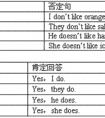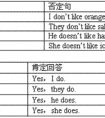根据句意,用所给动词的适当形式填空。1. Why not _________ (go) out for a walk, Linda?2. Our teachers often encourage us _________ (ask) questions in class.3.-八年级英语
分词可以有自己的状语、宾语或逻辑主语等。
现在分词构成形式:
①一般在动词原形末尾加ing,如do→doing、sing→singing、comfort→comforting
②以不发音的e、ue结尾的动词,先去e,再加ing,如dance→dancing、hike→hiking、write→writing、make→ making,take→taking
③以ee、oe、ye结尾的动词加ing,如see→seeing、toe→toeing、dye→dyeing
④以重读闭音节结尾的动词,并且末尾只有一个辅音字母,应双写这一字母,再加ing,如cut→cutting、swim→swimming
注:结尾是x则不必双写,如relax→relaxing
⑤以ie结尾的动词,要把ie变成y再加ing,如die→dying,lie→lying.
⑥以ic结尾的动词,要把ic变成ick再加ing,如picnic→picnicking,traffic→trafficking
过去分词构成形式:
1.规则动词:规则动词的过去分词的构成规则与规则动词的过去式的构成规则相同。四点变化规则:
(1)、一般动词,在词尾直接加“ ed ”。(然而要注意的是,过去分词并不是过去式)
work---worked---worked , visit---visited---visited
(2)、以不发音的“ e ” 结尾的动词,只在词尾加“ d ”。
live---lived---lived
(3)、以“辅音字母 + y ”结尾的动词,将 "y" 变为 "i" ,再加“ ed ”。
study---studied---studied,cry---cried---cried,try---tried---tried,fry---fried---fried.[1]
(4)、重读闭音节结尾,末尾只有一个辅音字母,先双写该辅音字母,再加“ ed ”。
stop---stopped---stopped , drop---dropped--dropped
(5)、以ic结尾的动词,要把ic变成ick再加ed,
picnic→picnicked ,traffic→trafficked
2 、不规则动词:见不规则动词表
分词用法:
1、分词作状语
分词在句子中作状语,可以表示时间、条件、原因、结果、让步、伴随等。
分词(短语)作状语时,其逻辑主语应与句中主语相一致。
当现在分词表示的动作发 生在谓语动词之前时, 则用现在分词的完成式,且所表示动作与谓语动作同时发生, 则用现在分词的一般式。
完成或被动关系用过去分词。
①现在分词:
The students went out of the classroom, laughing and talking.
②过去分词:
Accompanied by his friend, he went to the railway station.
Given better attention, the plants could grow better.
2、“while ( when, once, until, if , though等连词)+分词”结构
现在分词或过去分词作状语时,有时可以在分词前加while,when, once, although, until, if等连词。
①现在分词:
When leaving the airport, she waved again and again to us.
While waiting for the train, I had a long talk with my sister about her work……
②过去分词:
Once recovered, he threw himself into his work and made every effort to do it well.
Although working very hard, he failed to pass the final exam. If translated word by word, the passage will be difficult to understand.
3、分词作定语
分词作定语时,单个的分词通常放在被修饰的名词之前,分词短语一般置于所修饰的中心词后面。
现在分词修饰的是发出该动作的名词(即与名词有主谓关系),过去分词修饰承受该动作的名词(即与名词是动宾关系)。
We will go on with our experiment as soon as we get the added fund.
This is really an exhausting day to all of us!
We can see the part of the moon lighted by sunlight.
After a night spent in excitement and sleeplessness, I forced myself to take a long walk along the beach the next day.
More and more developing countries established strategic partnership with developed countries
4、分词作宾语补足语
现在分词在see, watch, hear, observe, notice, feel, find, glimpse, glance等感官动词和look at, listen to等短语动词以及
have, keep, get, catch, leave, set, start, send等使役动词后面与名词或代词构成复合宾语,作宾语补语的成分。
例:I see him passing my house every day.
I caught him stealing things in that shop.
I smelt something burning.
5、分词作表语
分词作表语通常看作形容词来用。
过去分词表示主语的感受或状态,主语多为人。现在分词表示主语的性质,而且主语多为物;
①过去分词:
We were so bored that we couldn’t help yawning.
She felt confused, and even frightened.
②现在分词:
He was very amusing.
That book was rather boring.
很多动词的现在分词都可以作表语:
exciting, interesting, encouraging, disappointing, confusing, touching, puzzling.
考点名称:现在完成时
- 现在完成时:
过去发生并且已经完成的动作对现在造成影响或后果,过去某一时间开始并一直持续到现在的动作或状态。
基本结构:主语+have/has+动词的过去分词
句式:
1. 否定句式:现在完成时的否定句式是“haven't (hasn't)+过去分词...”。
如:I have not seen the movie yet. 我还没看这部电影。
2. 一般疑问句:Have(Has)+主语+过去分词...? 如:
—Have you finished the work?你已经做完这项工作了吗?
—Yes, I have. 是的,我已经做完了。(No, I haven't. 不,我还没有做完。)
3. 特殊疑问句:特殊疑问词+have(has)+主语+过去分词...?如:
How many times have you been to the Great Wall?你去过长城几次?
提示:肯定句中有some, already时,改为否定句或疑问句时通常要分别改为any, yet。如:
I have already finished my homework. 我已经完成了我的作业。
→ I haven't finished my homework yet. (否定句)
→ Have you finished your homework yet? (一般疑问句)
现在完成时常见两种句型:
①for短语
②It is+一段时间+ since从句 - 现在完成时特点:
1. 非持续性动词的完成时的肯定式不能与时间段连用,若要用时间段状语,则应换成相应的持续性动词或状态动词。
例如:
He has left.
He has been away for an hour.
2. have/has been to 表示曾经去过某地,但现在不在那;have/has gone to表示现在已去某地,现在不在这。
例如:
He has been to Canada, but now he is working in our company.
Mr. Li in not at home. He has gone to Shanghai.
3. 完成时的肯定式常用already,而否定式和疑问式常用yet,但若already用于疑问句时,表示一种出乎意外的惊讶。
例如:Have you read it already? - 现在完成时和一般过去时区别:
现在完成时和一般过去时都表示在过去完成的动作。
但现在完成时强调的是这一动作与现在的关系。如对现在产生的结果或影响等,
而一般过去时只表示动作在过去某一时刻发生,不表示和现在的关系。
比较:
I have lost my new book. 我把新书丢了。(现在还未找到)
I lost my new book yesterday. 我昨天把新书丢了。(昨天丢的,现在找到与否没说明)
have been(to)与have gone( to)的区别:
have been(to)表示“去过某地(现在已经回来了)”,可用于各人称;
have gone(to)表示“去某地了(说话时某人不在当地)”,常用于第三人称,
前者可与once ,never,several times等连用,后者则不能。
如:
They have been to Beijing twice.他们去过北京两次。
He has gone to Beijing . 他去北京了。
现在完成时注意事项:
1.如单纯表示一段时间,或强调一段时间,虽有since一词,也不必用完成时。如:
It is two years since his father died. =His father has been dead for two years.他父亲去世已有三年了。
2.终止性动词现在完成时的否定式,已变成一种可以延续的状态,因此可以和表示一段时间的状语连用。如:
I haven't left here since 1997.自从1997年以来,我一直没有离开过这儿。
3..现在完成时不能单独与准确时间连用,(如表示过去的时间状语)
如:yesterday(morning、afternoon),last(morning、afternoon)等,除非与for,since连用.
4.不能与when连用. 现在完成时的用法:
1.表示动作发生在过去某个不确定的时间,但对现在留下了某种影响和结果。常被just、already、yet 等副词修饰。如:
-Have you had lunch yet?
-Yes,I have. I've just had it.
2.表示从过去某一时刻开始一直持续到现在的动作或状态。这个动作可能刚停止,可能仍然在进行。
常带有for和since等表示一段时间的状语。如:
He has taught here since 1981
他自1981年就在这儿教书。(可能还要继续教)
I have't seen her for four years.
我有四年没见到她了。
3.表示说话前发生过一次或多次的动作,现在成为一种经验,一般译为汉语“过”。
- 最新内容
- 相关内容
- 网友推荐
- 图文推荐
| [家长教育] 孩子为什么会和父母感情疏离? (2019-07-14) |
| [教师分享] 给远方姐姐的一封信 (2018-11-07) |
| [教师分享] 伸缩门 (2018-11-07) |
| [教师分享] 回家乡 (2018-11-07) |
| [教师分享] 是风味也是人间 (2018-11-07) |
| [教师分享] 一句格言的启示 (2018-11-07) |
| [教师分享] 无规矩不成方圆 (2018-11-07) |
| [教师分享] 第十届全国教育名家论坛有感(二) (2018-11-07) |
| [教师分享] 贪玩的小狗 (2018-11-07) |
| [教师分享] 未命名文章 (2018-11-07) |


![How much does it ______ to fly from Yancheng to Hainan Island?[ ]A. cost B. payC. spend D. take-七年级英语](http://www.00-edu.com/d/file/ks/4/2/shiyidongci/2020-01-05/small7dcf2f05998de63e10cc3629787031c81578210087.png)

![He always _____TV in the evening. He _____ listening to the radio. [ ]A. watch, don't like B. watches, doesn't like C. watching, don't like D. watch, do-七年级英语](http://www.00-edu.com/d/file/ks/4/2/shiyidongci/2020-01-05/small45d599b4a60b84e61cec210bfbf051f51578214524.png)
![I'd rather ___ to the Mcdonald's Restaurant because I like to listen to quiet music.[ ]A. to go B. going C. go D. went-八年级英语](http://www.00-edu.com/d/file/ks/4/2/shiyidongci/2020-01-05/small1767bba1727fef2c035c53dcbd9bc20e1578209517.png)
